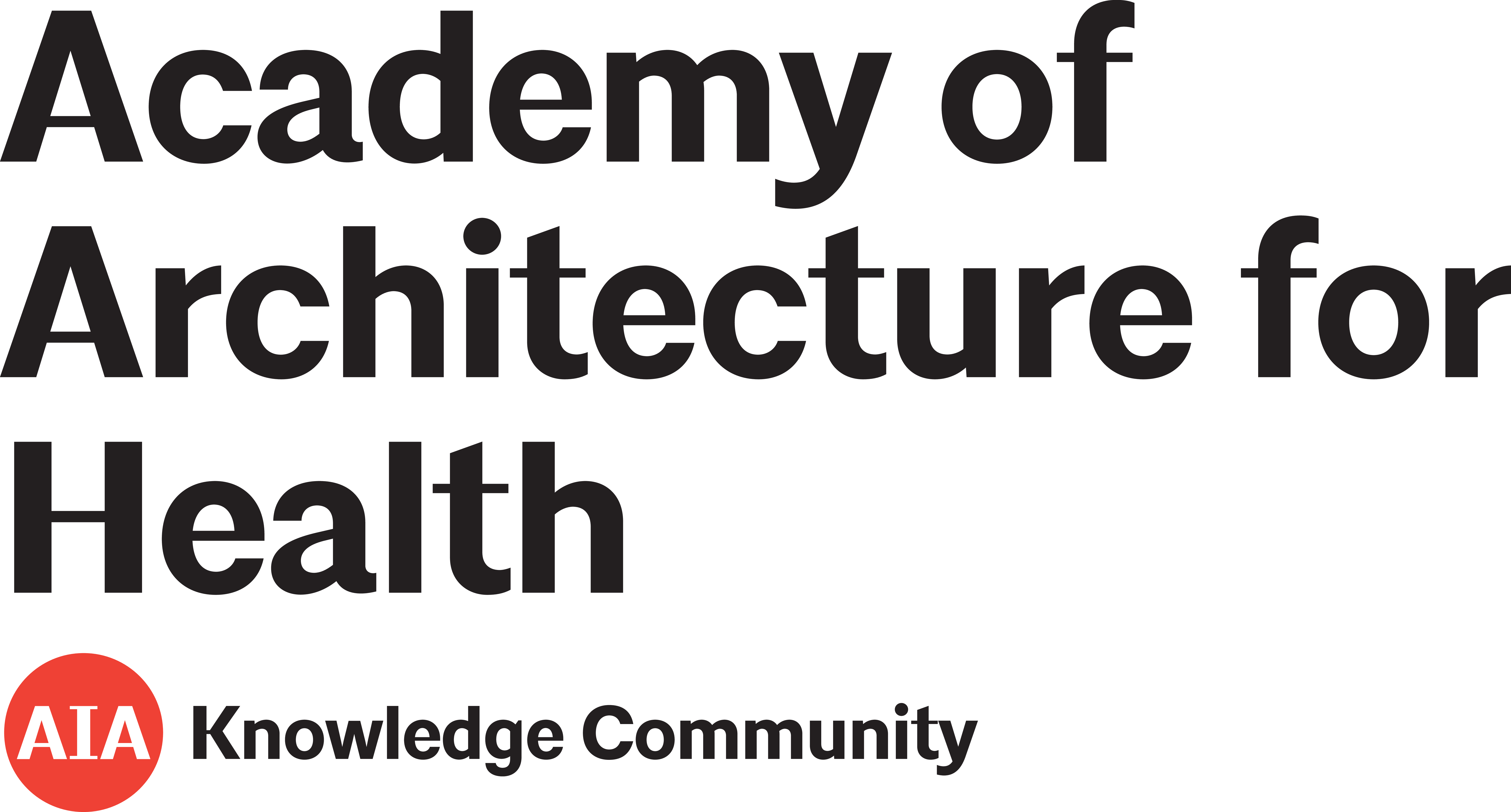The Role of Hospital Design in Reducing Anxiety for Pediatric Patients
2018
HERD: Health Environments Research & Design Journal
Journal Article
Issue 3
Volume 11
Pages 66-79
Author(s): Cartland, J., Ruch-Ross, H. S., Carr, L., Hall, A., Olsen, R., Rosendale, E., Ruohonen, S.
Since the 1960s, researchers have been studying the psychological trauma experienced by children receiving treatment in hospitals. Previous studies have observed instances of post-traumatic stress disorder, increased aggression, separation anxiety, and disrupted patterns of sleep in children discharged from hospitals.
Added July 2018
Noise pollution level in a pediatric hospital
2018
International Journal of Environmental Science and Technology
Journal Article
Author(s): Yarar, O., Temizsoy, E., Günay, O.
Added July 2018
Improving the Timeliness of Procedures in a Pediatric Endoscopy Suite
2014
Pediatrics
Journal Article
Issue 2
Volume 133
Pages e428-e433
Author(s): Tomer, G., Choi, S., Montalvo, A., Sutton, S., Thompson, J., Rivas, Y.
Added June 2018
Potential effectiveness of copper surfaces in reducing health care–associated infection rates in a pediatric intensive and intermediate care unit: A nonrandomized controlled trial
2016
American Journal of Infection Control
Journal Article
Issue 8
Volume 44
Pages e133-e139
Author(s): von Dessauer, B., Navarrete, M. S., Benadof, D., Benavente, C., Schmidt, M. G.
Added May 2018
The Influence of Traffic, Area Location, and Other Factors on Operating Room Microbial Load
2018
Infection Control & Hospital Epidemiology
Journal Article
Issue 4
Volume 39
Pages 391-397
Author(s): Taaffe, K., Lee, B., Ferrand, Y., Fredendall, L., San, D., Salgado, C., Shvorin, D., Khoshkenar, A., Reeves, S., Realizing Improved Patient Care through Human-Centered Design in the Operating Room (RIPCHD OR) Study Group
Traffic movement in hospitals causes disturbances and helps spread microbiota. Operating rooms (OR) can have surgical site infections (SSI) that are dangerous and can result in complications for patients.
Added April 2018
Psychosocially Supportive Design: The Case for Greater Attention to Social Space Within the Pediatric Hospital
2017
HERD: Health Environments Research & Design Journal
Journal Article
Issue 2
Volume 11
Pages 151-162
Author(s): McLaughlan, R.
While patient and family-centered care models often implement environmental designs that cater to certain psychosocial needs, more research is required to understand exactly how aspects of the built environment actually affect patient and family psychosocial needs themselves
Added February 2018
Macrocognition in the Healthcare Built Environment (mHCBE): A Focused Ethnographic Study of “Neighborhoods” in a Pediatric Intensive Care Unit
2017
HERD: Health Environments Research & Design Journal
Journal Article
Issue 2
Volume 11
Pages 104-123
Author(s): O’Hara, S., Klar, R. T., Patterson, E. S., Morris, N., Ascenzi, J., Fackler, J. C., Perry, D. J.
Added February 2018
The Impact of Operating Room Layout on Circulating Nurse’s Work Patterns and Flow Disruptions: A Behavioral Mapping Study
2018
HERD: Health Environments Research & Design Journal
Journal Article
Issue 3
Volume 11
Pages 124–138
Author(s): Bayramzadeh, S., Joseph, A., San, D., Khoshkenar, Amin, Taaffe, K., Jafarifiroozabadi, R., Neyens, D. M.
While there are studies focused on the effect that architectural layout, space planning, and adjacencies have on workflow patterns at the unit level, there are few studies at the micro level of individual procedure rooms or surgical suites. The layout of the OR and the placement of equipment may contribute to extraneous and unnecessary movement or create barriers to safety and efficiency, resulting in surgical workflow disruption (SFDs).
Added February 2018
Differential Effects of the Single-Family Room Neonatal Intensive Care Unit on 18- to 24-Month Bayley Scores of Preterm Infants
2017
The Journal of Pediatrics
Journal Article
Issue e1
Volume 185
Pages 42-48
Author(s): Vohr, B., McGowan, E., McKinley, L., Tucker, R., Keszler, L., Alksninis, B.
Added December 2017
The impact of single and shared rooms on family-centred care in children's hospitals
2017
Journal of Clinical Nursing
Journal Article
Issue 11-12
Volume 26
Pages 1584-1596
Author(s): Curtis, P., Northcott, A.
Family-centered care (FCC) is a concept used to treat children in healthcare facilities around the world. FCC is generally defined as a set of beneficial partnerships among families, patients, and providers promoting information sharing, respect and dignity, and collaboration and participation among all parties involved. As modern healthcare facilities continue to see a trend towards increased numbers of single-patient rooms, the influence of the built environment on the dynamics of FCC remains largely unstudied.
Added December 2017
Occupancy and patient care quality benefits of private room relative to multi-bed patient room designs for five different children's hospital intensive and intermediate care units
2016
Work
Journal Article
Issue 4
Volume 54
Pages 853-872
Author(s): Smith, T. J.
Added December 2017
Environment in pediatric wards: Light, sound, and temperature
2015
Sleep Medicine
Journal Article
Issue 9
Volume 16
Pages 1041-1048
Author(s): Oliveira, L., Gomes, C., Bacelar Nicolau, L., Ferreira, L., Ferreira, R.
Sleep is crucial to the well-being of humans, especially so for the recovery of those undergoing treatment or recuperating in hospitals. The authors cite studies that allude to the relevance quality of sleep has on health, neurodevelopment, generally, and to immune functioning and healing in patients.
Added November 2017
Emergency Nurses’ Perceptions of Efficiency and Design: Examining ED Structure, Process, and Outcomes
2017
Journal of Emergency Nursing
Journal Article
Issue 3
Volume 44
Pages 274–279
Author(s): Fay, L., Carll-White, A., Real, K.
Emergency departments (EDs) must work to improve efficiency in order to maintain standards of safe and effective care. Physical structures can significantly impact efficiency, and processes defined as the activities of emergency care can also play a role in efficiency. Outcomes are the perceptions of efficiency along with satisfaction to work or be treated in the designed environment. Rarely has the physical environment been studied in an emergency department especially when examining the relationships of structure, process, and outcome. Using a hierarchical linear regression the authors determined that all structures and processes examined were associated with efficiency and design.
Added November 2017
Infection prevention in pediatric anesthesia practice
2017
Pediatric Anesthesia
Journal Article
Issue 11
Volume 27
Pages 1077-1083
Author(s): Martin, L. D., Kallile, M., Kanmanthreddy, S., Zerr, D. M.
Added November 2017
Infection Prevention and Control in Pediatric Ambulatory Settings
2017
Pediatrics
Journal Article
Author(s): Rathore, M. H., Jackson, M. A., Committee on Infectious Diseases
Added November 2017
Emerging Trends in Performance Evaluation of Pediatric Intensive Care Units in Japanese Children’s Hospitals
2018
Building Performance Evaluation
Book Section
Author(s): Kato, Akikazu, Mori, Shiho, Kato, Masayuki, Preiser, Wolfgang F.E., Hardy, Andrea E., Schramm, Ulrich
Added September 2017
Noise pollution levels in the pediatric intensive care unit
2016
Journal of Critical Care
Journal Article
Author(s): Kramer, B., Joshi, P., Heard, C.
Added September 2017
Quality Improvement Initiative to Reduce Pediatric Intensive Care Unit Noise Pollution With the Use of a Pediatric Delirium Bundle
2017
Journal of Intensive Care Medicine
Journal Article
Issue 5
Volume 34
Pages 383-390
Author(s): Kawai, Y., Weatherhead, J. R., Traube, C., Owens, T. A., Shaw, B. E., Fraser, E. J., Scott, A. M., Wojczynski, M. R., Slaman, K. L., Cassidy, P. M., Baker, L. A., Shellhaas, R. A., Dahmer, M. K., Shever, L. L., Malas, N. M., Niedner, M. F.
Added September 2017
A model flexible design for pediatric hospital
Author(s): Sicignano, E., Petti, L., di Ruocco, G., Scarpitta, N.
Added August 2017
Noise Reduction in the Neonatal Intensive Care Unit: A Quality Improvement Initiative
2017
American Journal of Medical Quality
Journal Article
Issue 2
Volume 33
Pages 177-184
Author(s): Ahamed, M. F., Campbell, D., Horan, S., Rosen, O.
Elevated noise levels are regularly associated with adverse health effects among patients within healthcare environments. Infants are particularly vulnerable to elevated noise levels due to the immaturity of their auditory pathways, implying that neonatal intensive care units (NICUs) have an even greater responsibility for reducing noise levels.
Added June 2017




